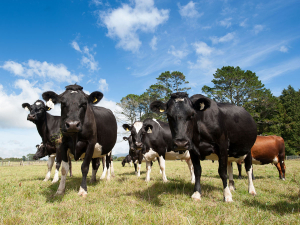2024/25 Dairy Statistics: NZ dairy farmers boost production with fewer cows
According to the New Zealand Dairy Statistics 2024/25 report, New Zealand dairy farmers are achieving more with fewer cows.
 DairyNZ is encouraging farmers to plan for the months ahead, amid increasing costs and an expected El Niño weather pattern.
DairyNZ is encouraging farmers to plan for the months ahead, amid increasing costs and an expected El Niño weather pattern.
DairyNZ has updated the national breakeven forecast to $7.78/kgMS, a 27c increase from its previous forecast.
The breakeven milk price is the milk sale price per kgMS to cover the farm’s costs in a season, excluding capital expenditure and principal repaid on loans.
DairyNZ head of economics, Mark Storey, explains that the breakeven figure has been updated based on new pricing information, tax changes and in response to milk price and dividend payment announcements.
“Outside the breakeven milk price, we have seen farm expense forecasts increase, impacting overall costs, while revenue expectations have shifted with high dividend payouts, accompanied by decreasing milk price expectations for the 2023/24 season,” says Storey.
“It’s also important to understand your overall business. The breakeven milk price is one indicator, however operating profit margin, debt-to-asset ratio and return on assets are all part of a farm’s overall business picture.
“Some of these indicators are available on the Econ Tracker, to allow farmers to see how their numbers compare and consider where they may require additional support to get through the season ahead.”
DairyNZ is also encouraging farmers to plan for the months ahead, amid increasing costs and an expected El Niño weather pattern potentially bringing a variety of challenges on farm.
DairyNZ’s general manager of farm performance, Sarah Speight, explains that right now farmers need to focus on growing and utilising as much pasture as possible, as it remains the cheapest source of feed.
“Farmers are faced with high costs, so attention to detail and a focus on financial outcomes ahead of production will drive better business outcomes,” says Sarah.
“This is especially important at this time of year where pasture cover and getting cows back in calf will determine financial and production outcomes, not just for this season, but into next season too.”
The new forecasts are published on the DairyNZ Econ Tracker and expressed as a national average, which does not necessarily reflect individual farm situations.
Farmers can contact their DairyNZ regional team, call 0800 4 DairyNZ, or go online to dairynz.co.nz/budgeting for more information and advice on how to navigate the season ahead.
Federated Farmers says almost 2000 farmers have signed a petition launched this month to urge the Government to step in and provide certainty while the badly broken resource consent system is fixed.
Zespri’s counter-seasonal Zespri Global Supply (ZGS) programme is underway with approximately 33 million trays, or 118,800 tonnes, expected this year from orchards throughout France, Italy, Greece, Korea, and Japan.
Animal owners can help protect life-saving antibiotics from resistant bacteria by keeping their animals healthy, says the New Zealand Veterinary Association.
According to analysis by the Meat Industry Association (MIA), New Zealand red meat exports reached $827 million in October, a 27% increase on the same period last year.
The black and white coat of Holstein- Friesian cows is globally recognised as a symbol of dairy farming and a defining trait of domestic cattle. But until recently, scientists didn’t know which genes were responsible for the Holstein’s spots.
According to the New Zealand Dairy Statistics 2024/25 report, New Zealand dairy farmers are achieving more with fewer cows.